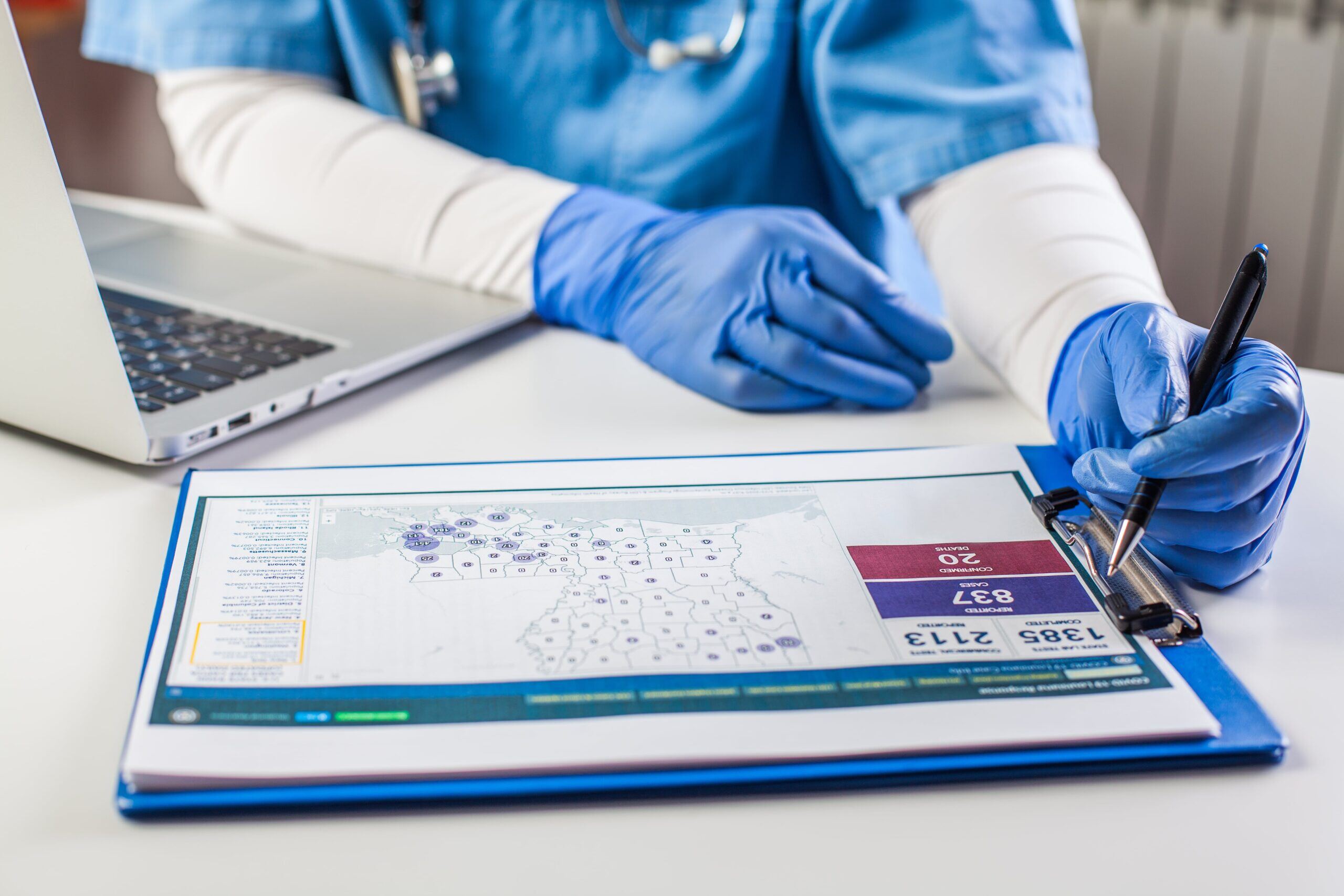 The incorporation of technology has been critical in transforming patient care, education, and interdisciplinary collaboration. At the forefront of this technological transformation is the introduction of EHR, a digital breakthrough that has had a huge impact on the healthcare sector.
The incorporation of technology has been critical in transforming patient care, education, and interdisciplinary collaboration. At the forefront of this technological transformation is the introduction of EHR, a digital breakthrough that has had a huge impact on the healthcare sector.
EHRs are comprehensive, real-time patient health records that provide authorized users with immediate and secure access to data. This technology not only simplifies the documentation process, but it also improves the quality of care by making accurate and up-to-date patient information available across many healthcare settings.
Physical therapy, an important part of the healthcare system, focuses on restoring function, enhancing mobility, and relieving pain through specialized therapeutic methods. The development of interprofessional education (IPE) and collaborative practice in physical therapy has emphasized the importance of cohesive and coordinated healthcare delivery.
IPE entails learning from, with, and about other healthcare professionals in order to develop a collaborative, practice-ready workforce with the goal of improving health outcomes. The integration of EHR into this system has proven transformational. This blog post explores the impact of EHR on interprofessional education and collaborative practice in physical therapy, demonstrating how this integration is leading the way for more efficient, effective, and patient-centered care.
Understanding EHRs in Physical Therapy:
Definition and Key Features of EHR Systems
- EHRs are computerized versions of paper charts that store a patient's medical history, diagnosis, prescriptions, treatment plans, immunization dates, allergies, radiological pictures, and laboratory test results. Key elements include real-time, patient-centered records that offer authorized users with immediate and secure information while also enabling other care-related tasks directly or indirectly via multiple interfaces.
Historical Context and Evolution of EHR in Healthcare, with a Focus on Physical Therapy
- The first computerized patient records were developed in the 1960s, marking the beginning of the evolution of EHR systems. However, it wasn't until the turn of the century that EHRs gained major momentum in the healthcare sector, owing to technological developments and a desire for better healthcare delivery methods. Physical therapy's adoption of EHR systems has been modest but significant, in line with the profession's rising emphasis on evidence-based practice and the requirement for efficient patient data management.
The Significance of EHR in Enhancing Patient Care and Data Management in Physical Therapy
- EHR systems have transformed the way physical therapists manage patient data, making it easier to evaluate progress, determine treatment efficacy, and alter interventions quickly. The capacity to immediately access a patient's whole health record, including previous treatments, prescriptions, and test results, enables a more educated and comprehensive approach to patient care.
The EHR's Role in Interprofessional Education (IPE):
An Overview of IPE And Its Importance In Healthcare Education, Particularly In Physical Therapy
- Interprofessional education (IPE) aims to develop collaborative skills and knowledge among healthcare students from various professional backgrounds. IPE equips physical therapists to operate smoothly within multidisciplinary teams, ensuring that patient treatment is approached comprehensively and cohesively.
How EHR Systems Promote Learning and Collaboration Between Physical Therapy Students and Other Healthcare Professionals
- EHR systems are used as an educational tool in IPE by offering a shared platform for students from multiple healthcare professions to view, evaluate, and discuss patient cases. This shared learning experience not only improves awareness of each profession's role, but it also promotes a team-based approach to patient care, which is required for effective collaborative practice.
Enhancing Collaborative Practice with EHR:
Definition and Benefits of Collaborative Practice in Physical Therapy:
- Physical therapists collaborate with physicians, nurses, occupational therapists, and other healthcare providers to provide complete care. This methodology takes advantage of each team member's unique abilities and views in order to create the best possible health results for the patients. Benefits include increased patient happiness, lower healthcare expenditures, and higher quality of service.
EHR can improve communication, coordination, and patient management among interdisciplinary teams
- EHR systems are critical for enabling good communication and coordination among interdisciplinary teams. They offer a consolidated platform for exchanging patient information, ensuring that all team members have access to current data, which is essential for making educated decisions and organizing care plans. Furthermore, EHRs allow for the documentation of interdisciplinary meetings and consultations, ensuring continuity of treatment while reducing the possibility of information silos.
Adopting EHR for Collaborative Practice: Challenges and Solutions
- Adoption of EHR systems can be challenging due to opposition to change, privacy issues, and training requirements. Comprehensive training programs, strong security measures, and including healthcare professionals in the design and deployment of EHR systems to ensure they suit the specific demands of collaborative practice are all potential solutions to these difficulties.
EHR in Physical Therapy - Bridging the Gaps in Care Delivery:
Detailed Exploration of How EHR Systems Specifically Address the Needs of Physical Therapy Practice
- EHR systems help physical therapists track functional improvement, document therapy sessions, and integrate rehabilitation programs. These systems are built to manage the particular characteristics of physical therapy, such as comprehensive exercise prescriptions, progress notes, and outcome metrics, which improves treatment delivery.
Discuss the Integration of EHR in Physical Therapy Settings and Its Impact on Patient Outcomes
- The use of EHR in physical therapy settings has resulted in more efficient processes, such as scheduling appointments and documenting patient progress. This integration has had a major influence on patient outcomes by ensuring that care is delivered on time, in coordination, and using the most up-to-date information available. Furthermore, EHRs enable the analysis of aggregate data to discover trends, assess the efficacy of interventions, and promote evidence-based practice.
EHR in Physical Therapy - Improving Education and Clinical Practice:
Examining the Impact of EHR on Physical Therapy Students' Educational Development
- EHR systems play an important role in the educational development of physical therapy students by exposing them to digital recording and patient management procedures utilized in clinics. This exposure helps students gain the skills needed to manage electronic records, comprehend privacy and security standards, and use data to make clinical decisions.
The Role of EHR in Facilitating Clinical Decision-Making and Evidence-Based Practice in Physical Therapy
- EHR systems facilitate clinical decision-making and evidence-based practice in physical therapy by giving quick access to patient histories, diagnostic information, and research findings. This access enables physical therapists to make informed judgments based on extensive data, ensuring that treatment regimens are personalized to patients' specific needs and grounded in the most recent scientific findings.
Impact on the Quality of Care and Efficiency in Physical Therapy Services
- The implementation of EHR in physical therapy has considerably improved care quality and efficiency. It has reduced the time spent on administrative activities, allowing therapists to devote more time to patient care. Furthermore, EHRs have increased billing and reimbursement accuracy, reduced the number of medical errors, and enabled better patient-therapist contact.
EHR in Physical Therapy - Fostering Interprofessional Collaboration:
Insights into How EHR Systems Enhance Collaboration Between Physical Therapists and Other Healthcare Professionals
- Understanding how EHR systems improve collaboration between physical therapists and other healthcare professionals. EHR systems improve cooperation by offering a consistent platform for physical therapists and other healthcare professionals to view and exchange patient data seamlessly. This interoperability is critical for coordinating care, particularly for patients with severe illnesses that necessitate multidisciplinary intervention. EHRs enable real-time updates and communication, keeping all team members aware of patient progress and treatment plans, resulting in a more collaborative and efficient care delivery paradigm.
The Importance of Interoperability and Shared Access to Patient Information for Coordinated Care
- The capacity of different EHR systems to exchange and use information—is critical for successful interprofessional collaboration. Shared access to patient information ensures that care decisions are made using the most comprehensive and up-to-date data available, reducing redundancies and improving overall care quality. Efforts to increase EHR interoperability, such as standardizing data formats and protocols, are crucial for developing collaborative practice in a variety of healthcare contexts.
Strategies to Overcome Barriers to Effective Interprofessional Collaboration Using EHR
- To overcome barriers to effective interprofessional collaboration using EHR, strategies may include training healthcare professionals on EHR systems, improving EHR usability and functionality for interdisciplinary teams, and fostering a collaborative culture through regular meetings and case discussions. Furthermore, addressing legal and regulatory issues with data sharing and privacy is critical for enabling smooth communication.
The incorporation of EHR into physical therapy marks a significant advancement in the goal of efficient, effective, and patient-centered care. EHR systems have the potential to change the way physical therapists and other healthcare professionals learn, communicate, and collaborate to achieve better health outcomes by improving interprofessional education and collaborative practice.
As we consider the transformational potential of EHR, it becomes evident that adopting technology is no longer an option, but rather a requirement for the advancement of physical therapy.
You May Also Like
THESE RELATED STORIES

The Comprehensive Guide to the Future of Cloud-Based Electronic Health Records

EHR Software in Family Practice: Tips and Tricks
